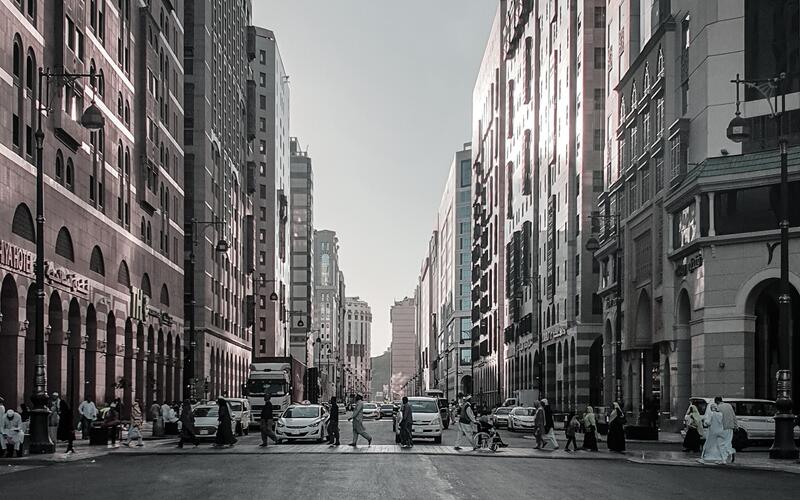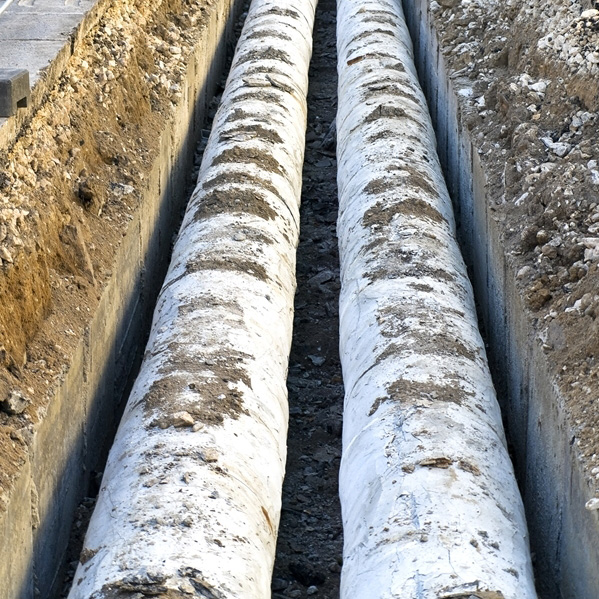Reimagining parking: Unlikely spaces for climate resilience

Reimagining parking: Unlikely spaces for climate resilience
For every car in the United States, there are four parking spots. Research shows that replacing underutilized parking with green space and using environmentally friendly asphalt-alternatives will make cities more climate resilient. While cities in the United States have barely begun to grapple with this issue, cities like Paris, which removed 70,000 on-street parking spaces—half of the city’s previous 140,000 total—are de-paving the way.
Croeser, Thami, et al. “Finding space for nature in cities: the considerable potential of redundant car parking.” Urban Sustainability 2, 27 (2022). DOI: https://doi.org/10.1038/s42949-022-00073-x
Moretti, Laura, et al. “Investigation of Parking Lot Pavements to Counteract Urban Heat Islands.” Sustainability 14, 7273 (2022), DOI: 10.3390/su14127273
When driving in a city, finding a good, free parking spot feels like striking gold. But research suggests that there are far more spots than meet the eye—in fact, an oversupply. There are over a billion parking spots in the United States. Off-street parking alone accounts for 5 percent of all urban land. Yet the demand for parking is declining due to recent trends, including the rise of autonomous ride-hailing vehicles, micro-mobility devices (e.g., electric bikes and e-scooters), public transportation, remote work, and online shopping. As a result, cities around the world tend to have a lot of unused, poorly distributed parking spaces.
Many parking spaces are unnecessary and have negative environmental impacts. One such impact is the urban heat island effect. Urban heat islands are pockets within cities that have higher temperatures relative to outlying areas. Urban heat islands occur when cities replace natural surfaces and vegetation with lower-albedo surfaces. Albedo is the ability of a surface to reflect solar energy. Low-albedo surfaces such as asphalt and concrete trap, absorb, and retain heat, making the area substantially warmer.
Another environmental impact is flood risk. Large impermeable surfaces, like asphalt parking lots, are unable to absorb rainfall, which increases the intensity of stormwater flows. Beyond water damage, runoff from parking lots often also contains high levels of pollutants. With nothing to absorb and redirect it, the heavily polluted runoff may end up in waterways. Fortunately, cities can reimagine parking infrastructure to secure environmental benefits. Parking spaces, especially when they are redundant, occupy valuable urban land and decrease resiliency to environmental risks. Two recent articles expand on the environmental impact of excess parking and propose solutions.
Published last year in npj Urban Sustainability, the article “Finding Space for Nature in Cities” by Croeser et. al. used the city of Melbourne as a case study. In their research, they estimated the environmental benefits of replacing underutilized parking with native trees and greenery. First, the team identified thousands of redundant parking spaces in Melbourne. They then investigated the potential for converting surplus street parking into a biodiverse green space. The study noted the positive impacts of converting parking to green space. De-paving increases tree canopy, decreases impermeable surfaces, improves stormwater treatment, and strengthens ecological connectivity. Therefore, converting street parking in Melbourne into green space would help the city meet many of its environmental goals, which include expanding tree canopy cover, de-paving flood-prone areas, and intercepting phosphorus, nitrogen, and sediment.
While the Australia-based research team investigated the conversion of parking spaces to green spaces, an Italy-based research team studied ways to make new and existing parking spaces more environmentally friendly. Researchers from the Department of Civil, Constructional and Environmental Engineering and the Department of History at Sapienza University of Rome published “Investigation of Parking Lot Pavements to Counteract Urban Heat Islands” in Sustainability. The researchers compared the albedo of asphalt pavement to several alternatives. They found that asphalt pavement performed the worst, reflecting the least solar energy and increasing surrounding surface temperatures. However, light concrete bricks and vegetation performed the best. They concluded that replacing asphalt with this alternative could help mitigate urban heat island effects.
Whether in Melbourne, Rome, or New York City, urban areas globally have seen an overwhelming amount of land consumed by parking infrastructure. This occurs for two main reasons. First, many municipalities historically required developers to build more parking than necessary. Many continue to do so, further worsening the problem. For example, Melbourne had minimum parking requirements for decades. In the United States, parking minimum requirements are typically local zoning ordinances that require a minimum number of parking spaces for different types of developments. Second, developers’ financial backers feared that if projects did not have enough parking, they would not be profitable. Many financiers avoid projects with what they perceive as too few parking spaces. Fortunately, parking-heavy policies and mindsets are beginning to shift.
This research highlights why parking infrastructure matters for climate change and sustainability. There are opportunities for municipal lawmakers and developers to take immediate action to reverse the climate risk and negative environmental impacts of parking by limiting the construction of new parking infrastructure and reimagining existing parking infrastructure as sites for green space. Municipal lawmakers in the United States could leverage their state-delegated land use authority to require developers to create new parking spaces only utilizing higher-albedo materials. They could also create parking maximums and landscaping requirements. Developers themselves do not have to wait for regulation to start using higher-albedo materials for parking. As soon as local regulations and financial backers allow, they can integrate more green infrastructure in parking projects to reduce climate and environmental impacts in urban landscapes. By reimagining parking, cities can become more sustainable.




